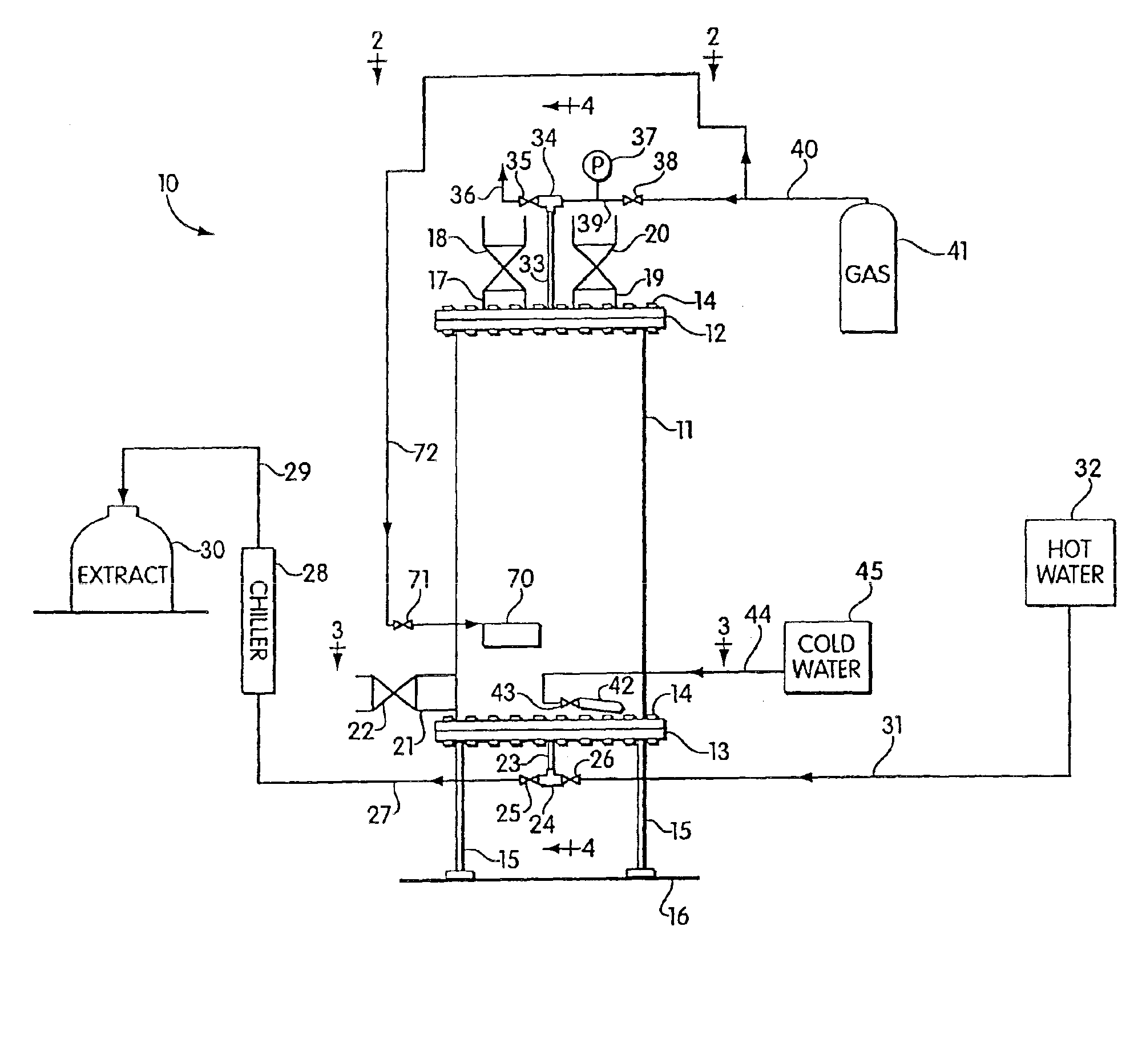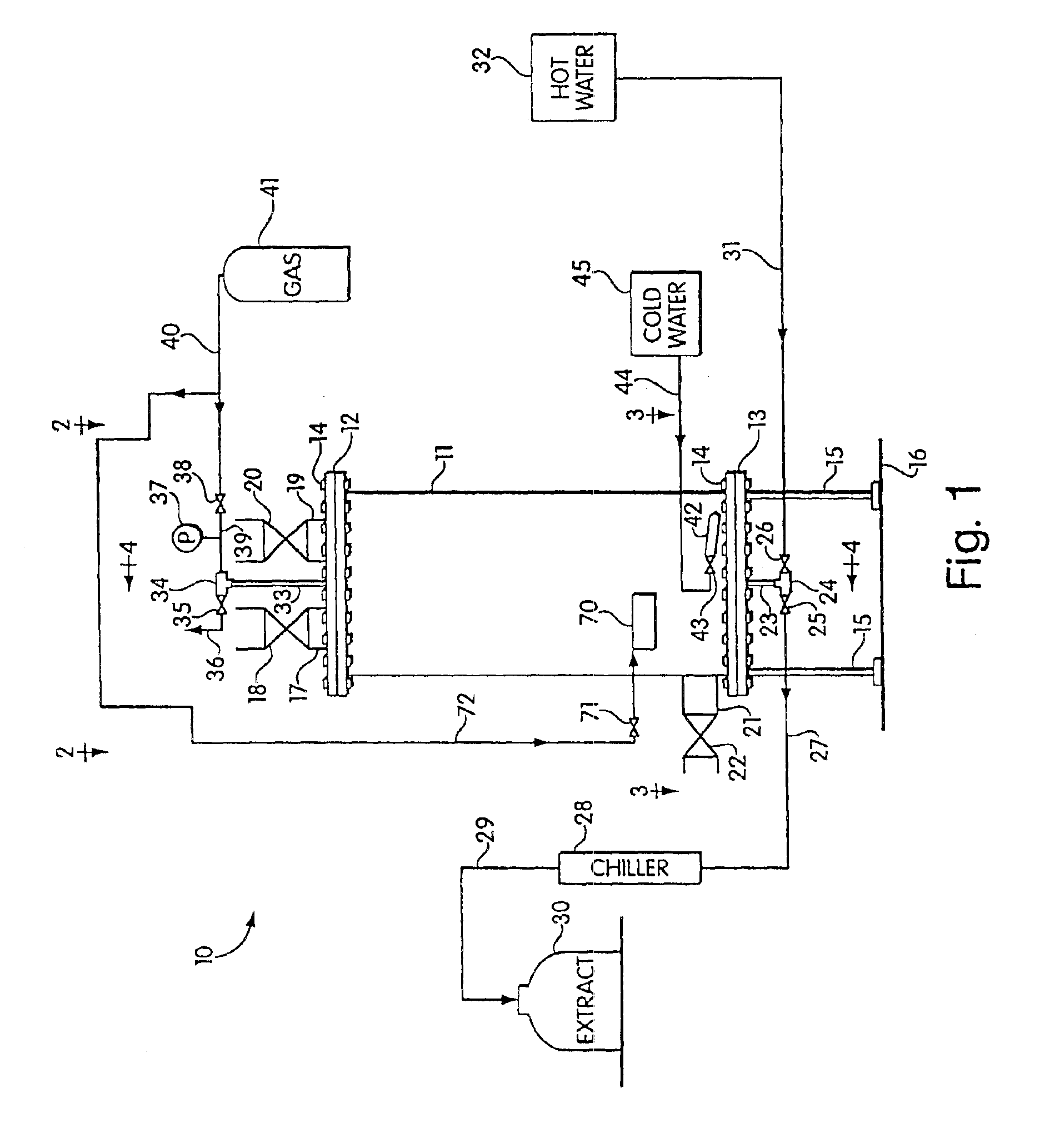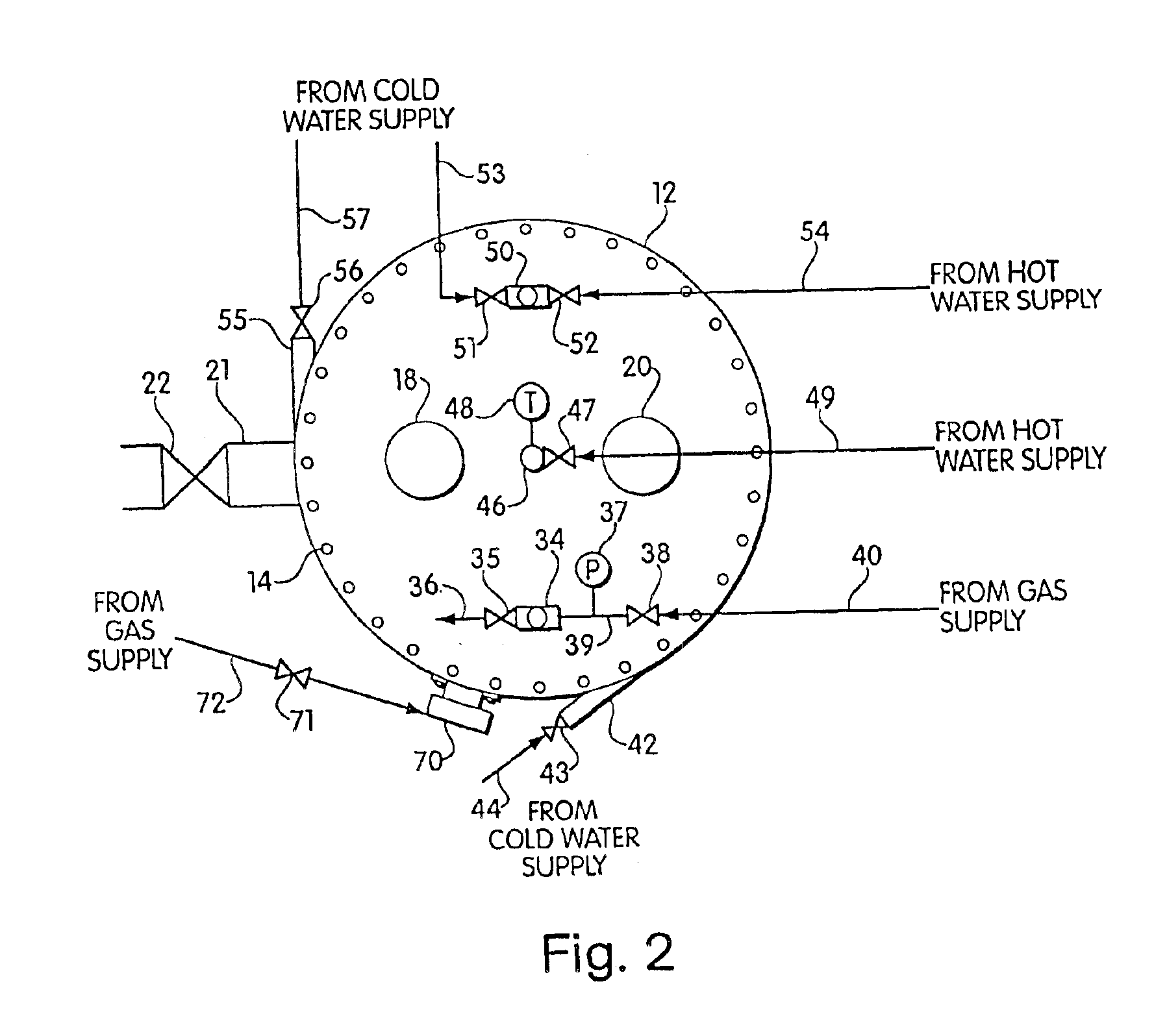Coffee system
a coffee system and coffee technology, applied in the field of coffee systems, can solve the problems of undesirable quantity of beverages produced, bitter extracts with relatively high concentration of components, and inability to meet the needs of consumers, and achieve excellent and desirable sweetness, flavor, and fragrance qualities
- Summary
- Abstract
- Description
- Claims
- Application Information
AI Technical Summary
Benefits of technology
Problems solved by technology
Method used
Image
Examples
example
[0056]The industrial scale extractor described in connection with FIGS. 1-4 was used to produce a coffee extract using the methods described in the preceding sections with the modifications indicated below. Approximately 265 lbs. of a blend of Costa Rican, Colombian, and Sumatran coffee beans, roasted to a medium dark finish, were ground using a Bunn coffee grinder (HVG, Bunn-o-matic, Springfield, Ill.) on a setting of 4.0. A Rotap sieve analysis indicated an 80% retention in Tyler sieves 12, 16, and 18, with the remaining 20% distributed across sieves 20, 30, 40, 45, and the bottom tray.
[0057]The vessel was filled with the dry ground coffee forming a bed and the system was wetted with hot water, from a supply maintained at 193 degrees F. and 90 psig, as described above. Valve 25 on the extract outlet line 23 was then closed and about 40 gallons of the hot water was added to the vessel via inlet line 46 yielding a final vessel pressure of about 90 psig. the vessel was then “burped” ...
PUM
 Login to View More
Login to View More Abstract
Description
Claims
Application Information
 Login to View More
Login to View More - R&D
- Intellectual Property
- Life Sciences
- Materials
- Tech Scout
- Unparalleled Data Quality
- Higher Quality Content
- 60% Fewer Hallucinations
Browse by: Latest US Patents, China's latest patents, Technical Efficacy Thesaurus, Application Domain, Technology Topic, Popular Technical Reports.
© 2025 PatSnap. All rights reserved.Legal|Privacy policy|Modern Slavery Act Transparency Statement|Sitemap|About US| Contact US: help@patsnap.com



